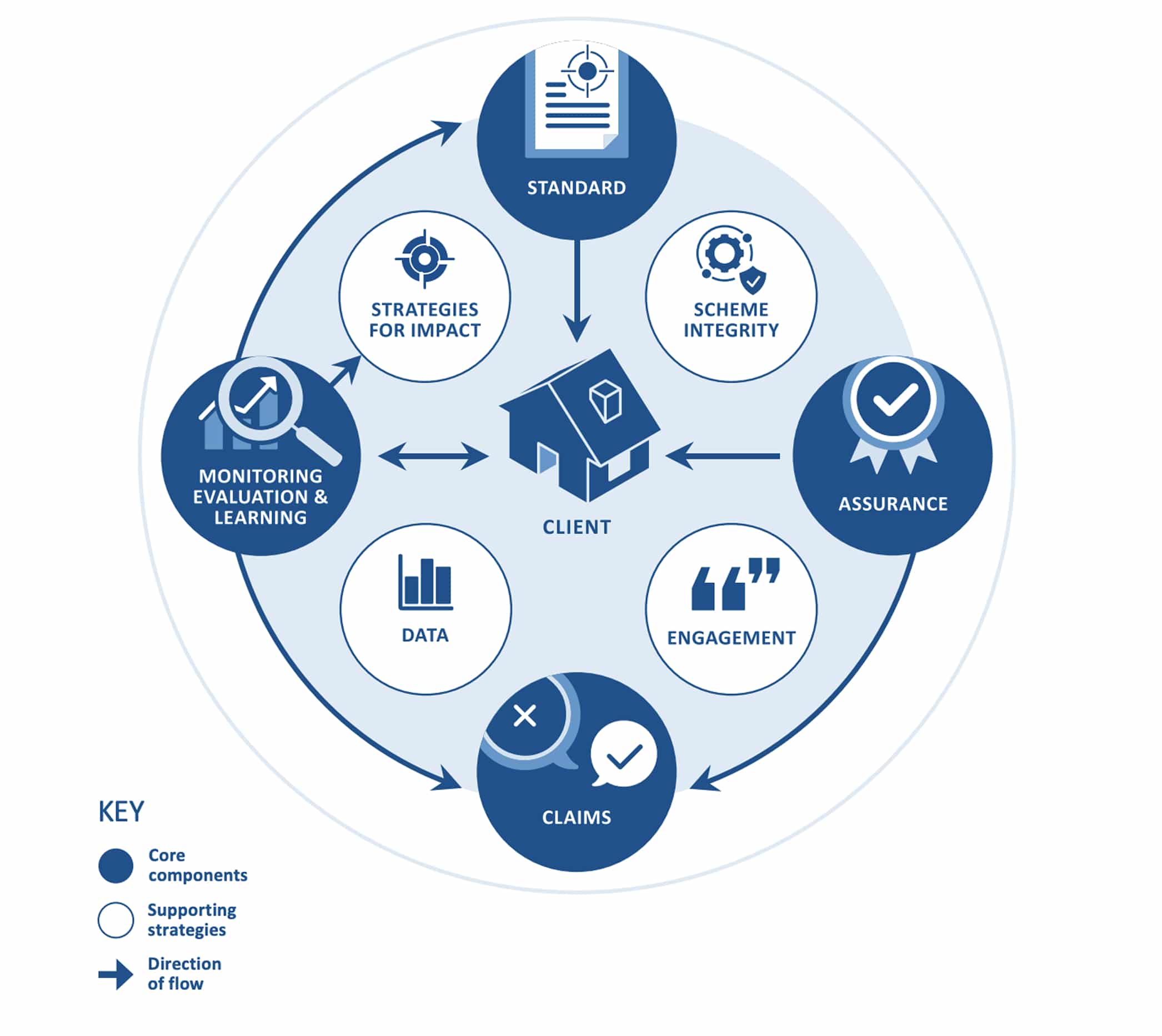About the ISEAL Code
Learn about the ISEAL Code, including how it was developed, who can use it, and what its key components are. This page also contains further information on the scope of the ISEAL Code.

What is the ISEAL Code?
The ISEAL Code of Good Practice for Sustainability Systems ‘the ISEAL Code’ is a globally recognised framework for strengthening the effectiveness of sustainability systems (also known as voluntary sustainability standards or sustainability schemes).
The ISEAL Code is underpinned by the ISEAL Credibility Principles, which define the core values of credible and effective sustainability systems.
It was developed through a multi-stakeholder consultation process conducted with over 400 stakeholders from 205 organisations, across 48 countries. Learn more about the consultation process here.
Who can use the ISEAL Code?
Sustainability systems set sustainability performance levels or improvement pathways for businesses and other industry actors. The ISEAL Code defines what credible practice looks like for sustainability systems, setting requirements for good practice to be implemented.
Eligible sustainability systems who wish to adhere to these requirements can get assessed through our compliance programme in order to gain ISEAL Code Compliant status. To learn more about the programme and check the eligibility criteria, see here.
Other stakeholders, such as policymakers, can use the ISEAL Code to design and guide policy implementation by providing clear definitions and criteria for credible sustainability practices. Businesses can also use the ISEAL Code to identify credible sustainability tools and partners to help them minimise risk, meet regulatory requirements, and drive impact.

Navigating the ISEAL Code
The ISEAL Code takes an integrated approach to presenting the components of a credible sustainability system. It is structured around eight related functions: four core components and four supporting strategies, each presented in a separate section.
Click to view each section on the ISEAL Code:
The interactions and coordination between these core components and supporting strategies enables sustainability systems to achieve their defined sustainability outcomes and/or back up their controlled claims and communications. The illustration below outlines the dependencies and interactions between these eight related functions:

Scope of the ISEAL Code
The ISEAL Code of Good Practice for Sustainability Systems (‘the ISEAL Code‘) applies to the owner of any sustainability system or scheme (‘the scheme owner’) that:
Establishes sustainability-focused standards, performance levels, or performance pathways
Enables measurement, monitoring or verification of performance and progress against these requirements
Allows for claims or communications about the results